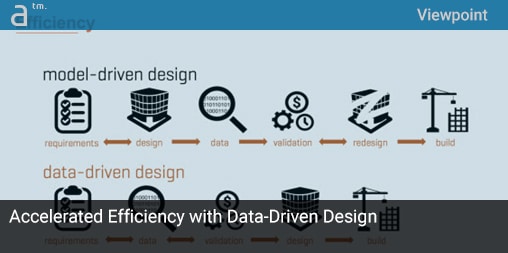Building Information Modeling, as the name implies, should be all about information. But the reality looks quite different—most BIM processes are centered around model-based workflows. This approach implies that models are designed based on certain requirements, then data is generated and validated. Handing those models over to the next profession within the building lifecycle often generates data losses, which leads to errors. And even before the construction itself starts, the model needs to be redesigned. Is that efficient? Why do we not focus more on the data itself?
Non-graphical data can drive the entire value chain. This is what we in the Nemetschek Group call Building Lifecycle Intelligence™. The approach needs an open, connected ecosystem, centered around data that dynamically connects models and documents.
But what exactly is data? Data basically represents a collection of facts, whilst information is how you understand those facts in context—organized, structured, accessible, and reusable by others. In the context of buildings, this implies that building data follows a data schema that can be utilized dynamically across different software applications. Non-graphical data can drive the entire value chain. This is what we in the Nemetschek Group call Building Lifecycle Intelligence™. The approach needs an open, connected ecosystem, centered around data that dynamically connects models and documents. Working in an open cloud environment allows anyone to connect and communicate through open protocols and standards, generating real value for all parties.
Model-driven design versus Data-driven design—why data-driven design is more efficient than model-driven design and what this has to do with Building Lifecycle Intelligence.
By securing a structured, cross-discipline dataset that connects both multiple graphical models from various sources and required documentation for all assets and systems, we ensure easy access for all stakeholders, including the non-BIM professionals. Life would be so much easier if—for example—you could click on a 2D drawing in a PDF file and get the building material of the represented element, the specified thermal properties, or its construction status information. Or if you could use an Excel-style interface to filter the MEP objects in the BIM project and access all properties, with the ability to easily add and edit information. For example, imagine manufacturer and pricing details, without having to learn and use a BIM authoring tool. Or imagine using business intelligence tools to analyze and monitor overall and detailed construction progress across all disciplines.
We just need to look at the construction industry as a perpetual loop, not only when it comes to the reuse of materials (the circular economy), but also when it comes to the reuse of data.
I believe that interoperability and information sharing between industry stakeholders should not be a ground for competition, but rather the basis for everything we do. This also has a positive impact on asset information requirements; in other words, the data and information about the assets in the building. With a data-driven design approach, this information is generated in a structured, consistent format, and is easily accessible by the facility manager. Perfectly usable for any renovation works, for example.
MORE: The Evolved Office — Smaller and More Collaborative
In return, the data and intelligence that is created during the operation phase of a building—we are talking about 30 years or more, in many cases—can be reused when planning and designing the next building. We just need to look at the construction industry as a perpetual loop, not only when it comes to the reuse of materials (the circular economy), but also when it comes to the reuse of data. Having access to the entire set of “intelligence” is key to optimizing operations and to driving better decisions in the next project. With Building Lifecycle Intelligence™, we are at the beginning of an exciting journey towards increasing efficiency and quality. A journey with tremendous potential.
About Viktor Várkonyi
Viktor Várkonyi is the Chief Division Officer Plan & Design Division, Nemetschek Group, and a Member of the Executive Board of the Nemetschek Group. Prior to this role, he was the CEO of Graphisoft.
About the Nemetschek Group
The Nemetschek Group is a pioneer for the digital transformation in the AEC industry. With its software solutions, it covers the complete life cycle of building and infrastructure projects and guides its customers into the future of digitalization. As one of the world’s leading corporate groups in this field, the Nemetschek Group increases quality in the construction process and improves the digital workflow of all those involved in the construction process. This revolves around the use of open standards (Open BIM). The innovative solutions of the 16 brands in the four customer-oriented divisions are used by approximately six million users worldwide. Founded by Prof. Georg Nemetschek in 1963, the Nemetschek Group today employs more than 3,000 experts.
Publicly listed since 1999 and quoted on the MDAX and TecDAX, the company achieved revenue in the amount of EUR 556.9 million and an EBITDA of EUR 165.7 million in 2019.
